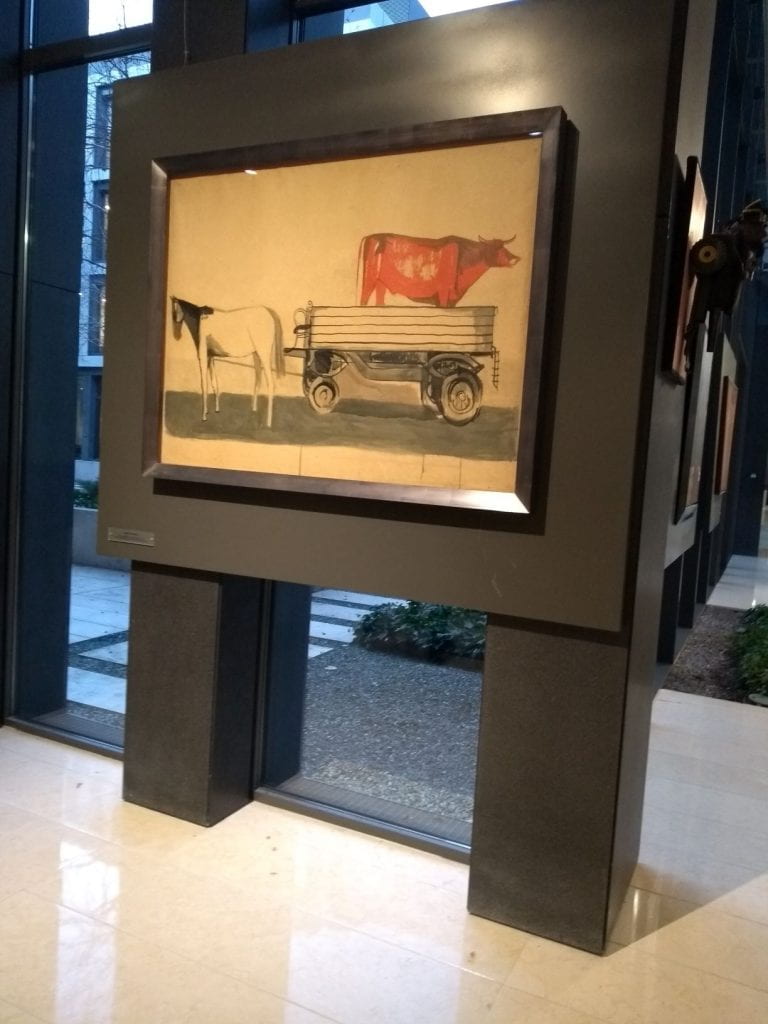Non-Public Collection Paradox
By editorial, on 3 March 2020
Ieva Astahovska
 Our visit to Starak Family Foundation was both a direct continuation and quite sharp contrast to the previous meeting with founders of Andrzej Wróblewski Foundation: from a voluntary run institution that dedicatedly takes care of Wróblewski’s creative legacy, but doesn’t possess any art works and even doesn’t have its own office space, we came to a semi-public art collection venue, run by private collectors Anna and Jerzy Starak, who own one of Poland’s largest pharmaceutical companies.
Our visit to Starak Family Foundation was both a direct continuation and quite sharp contrast to the previous meeting with founders of Andrzej Wróblewski Foundation: from a voluntary run institution that dedicatedly takes care of Wróblewski’s creative legacy, but doesn’t possess any art works and even doesn’t have its own office space, we came to a semi-public art collection venue, run by private collectors Anna and Jerzy Starak, who own one of Poland’s largest pharmaceutical companies.
In its public part, entitled Spectra Art Space, we visited the exhibition by painters Maria Jarema (1908–1958) and Andrzej Wróblewski (1927–1957) Substantial Realism. Both artists, living and working at the same time and place, in their final years had very different relations to the political regime and its demands in art, socialist realism, and finally the shift to much freer expression. Yet in this exhibition that is structured in thematic flows “Maternity, Modern Woman, Love, War” Jarema’s mostly abstract, associative and ambiguous compositions that were not shown during the 1950s and Wróblewski’s realist paintings – some of them surreal, others poignant, but all very intimate –, form not a juxtaposition but a parallel view of the after-war epoch that bears both war traumas, and also a longing for humanity.
 We had also an exclusive possibility to see the non-public part of Starak Foundation’s art collection that is partly displayed in its office building and includes classics of Polish postwar modernism. Quite paradoxically – or maybe it’s not so strange in today’s neoliberal times? – it was the only place during our program in Warsaw where we could see the original works by such significant Polish modernist authors as Władysław Strzemiński, Henryk Stażewski, Erna Rosenstein, Wojciech Fangor and others. This permanent display left rather an odd impression – art works arranged between stylish designer furniture, indoor plant beds, glass walls and on the most different flat surfaces – seemed to serve for its owners and viewers for something between decoration and fetish. One can observe increasing role of private collectors also in many other East European art scenes, and inevitably it brings also subjective tastes and different understandings of art and its displays.
We had also an exclusive possibility to see the non-public part of Starak Foundation’s art collection that is partly displayed in its office building and includes classics of Polish postwar modernism. Quite paradoxically – or maybe it’s not so strange in today’s neoliberal times? – it was the only place during our program in Warsaw where we could see the original works by such significant Polish modernist authors as Władysław Strzemiński, Henryk Stażewski, Erna Rosenstein, Wojciech Fangor and others. This permanent display left rather an odd impression – art works arranged between stylish designer furniture, indoor plant beds, glass walls and on the most different flat surfaces – seemed to serve for its owners and viewers for something between decoration and fetish. One can observe increasing role of private collectors also in many other East European art scenes, and inevitably it brings also subjective tastes and different understandings of art and its displays.
 Close
Close



